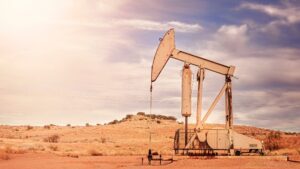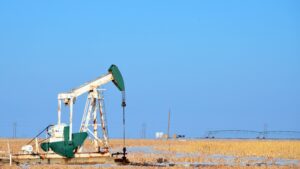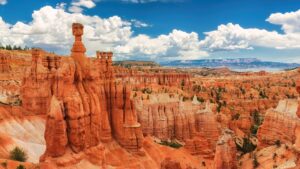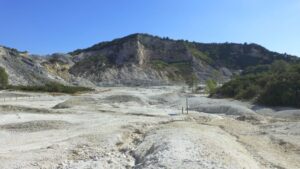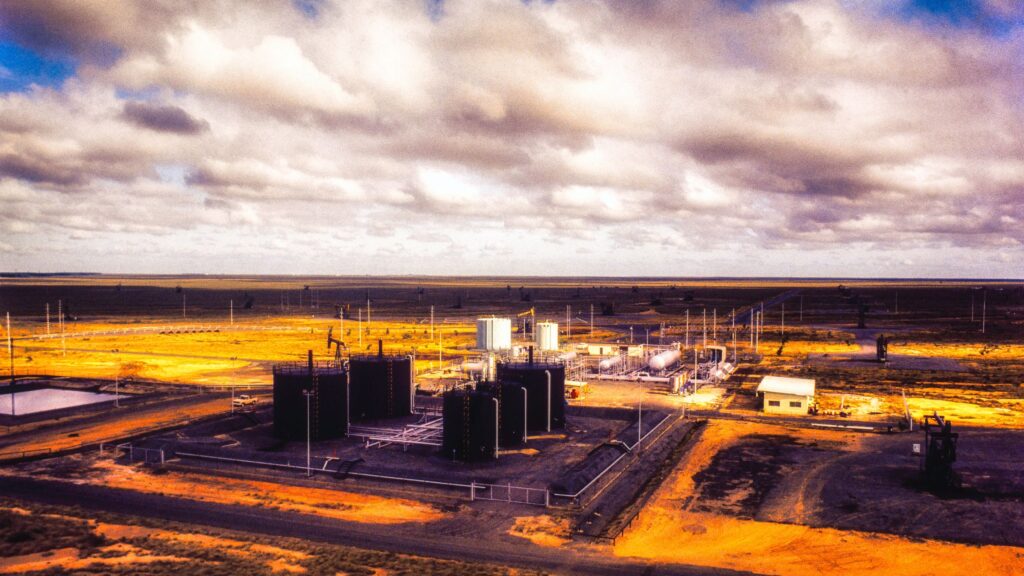Utah ranks 13th in the nation for crude oil production and 8th for natural gas production. These rankings highlight Utah’s importance in the United States’ energy sector, contributing to both the local economy and national energy independence.
Let’s explore all you need to know all Utah mineral rights before either buying or selling your mineral rights.
What are Mineral Rights in Utah?
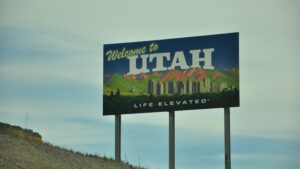
Mineral rights in Utah refer to the ownership and entitlement to extract minerals beneath the surface of a piece of land. These rights are distinct from surface rights, meaning the surface landowner may not necessarily own the minerals underneath. The Bureau of Land Management (BLM) oversees these rights on federal lands, while private and state-owned lands have different regulatory bodies.The ownership of mineral rights allows individuals or entities to explore, extract, and sell minerals such as crude oil, natural gas, coal, copper, and gold.
What are the Main Types of Mineral Rights Properties in Utah?
In Utah, mineral rights properties are categorized based on ownership and the specific resources they contain. Here’s an overview of the main types:
- Private Mineral Rights: Owned by private individuals or companies, these rights are often purchased or inherited. The owner has the right to extract and sell the minerals.
- State Mineral Rights: Managed by the state government, these rights pertain to minerals found on state-owned lands. The state can lease these rights to private companies.
- Federal Mineral Rights: Overseen by the Bureau of Land Management, these rights cover minerals on federal lands. The BLM regulates and leases these rights to ensure responsible extraction.
- Tribal Mineral Rights: Managed by Native American tribes, these rights pertain to minerals on tribal lands. Tribes have the authority to lease these rights to private entities.
What are the Major Oil and Gas Fields in Utah?
Utah is home to several significant oil and gas fields that contribute to its status as a key energy producer in the United States. These fields are distributed across various regions, each with unique geographical and geological characteristics. Below is a list of the major oil and gas fields in Utah:
- Uinta Basin: Located in northeastern Utah, the Uinta Basin is rich in both oil and natural gas reserves. This basin is a primary area for energy production, contributing significantly to the state’s output of crude oil and natural gas. The region’s oil fields are known for their high-quality resources and extensive drilling operations.
- Paradox Basin: Situated in southeastern Utah, the Paradox Basin is another critical area for oil and gas extraction. This basin contains significant deposits of natural gas and oil, with numerous wells and ongoing exploration activities. The Paradox Basin’s complex geology presents unique opportunities for resource development.
- San Juan County: San Juan County, located in the southeastern part of the state, hosts several productive oil wells. The county’s oil fields are part of the larger San Juan Basin, which extends into New Mexico. This area is known for its extensive drilling operations and substantial contributions to Utah’s oil production.
- Duchesne County: Duchesne County, in northeastern Utah, is a vital region for oil and gas production. The county’s oil fields are part of the Uinta Basin, and they play a significant role in the state’s energy sector. Duchesne County’s oil production has been steadily increasing, driven by advances in extraction technologies.
- Wasatch Plateau: The Wasatch Plateau is located in central Utah and is known for its natural gas deposits. This region’s gas fields are essential for meeting the state’s energy needs, and ongoing exploration efforts continue to identify new resources.
- Henry Mountains: Found in southern Utah, the Henry Mountains region has been identified as having potential for oil and gas exploration. While not as extensively developed as other areas, the Henry Mountains hold promise for future resource extraction.
What are the Main Minerals Found in Utah?
Utah’s diverse geological landscape makes it rich in a variety of minerals. These resources play a crucial role in the state’s economy, contributing to both local and national markets. Below is a list of the main minerals typically found in Utah, along with a short description for each:
- Crude Oil: Utah ranks 13th in the nation for crude oil production. The state’s oil reserves are primarily located in the Uinta and Paradox Basins. Crude oil extraction is a significant part of Utah’s energy sector, supporting both local economies and the broader market.
- Natural Gas: Utah is the 8th largest producer of natural gas in the United States. The state’s natural gas production is concentrated in regions such as the Uinta and Wasatch Basins. Natural gas is a critical energy resource, used for heating, electricity generation, and industrial processes.
- Coal: Utah has substantial coal deposits, particularly in the central and southern parts of the state. Coal mining has a long history in Utah, providing energy for power generation and industrial use. The state’s coal reserves are a vital component of its energy mix.
- Copper: Copper is primarily extracted from the Bingham Canyon Mine, one of the largest open-pit copper mines in the world. Located near Salt Lake City, this mine produces a significant portion of the state’s copper, which is used in electrical wiring, plumbing, and various industrial applications.
- Gold: Gold mining in Utah is concentrated in several areas, including the western part of the state. Gold is extracted from both lode and placer deposits, contributing to the state’s mineral wealth. Gold is a valuable resource used in jewelry, electronics, and investment.
- Silver: Silver is another important mineral found in Utah, often extracted as a byproduct of other mining activities. The state’s silver deposits are located in areas such as the Tintic Mining District. Silver has various uses, including in electronics, jewelry, and as an industrial catalyst.
- Uranium: Utah has historically been a significant producer of uranium, particularly during the mid-20th century. Uranium mining is concentrated in the southeastern part of the state, in regions such as San Juan County. Uranium is used primarily as fuel for nuclear power plants.
- Beryllium: Utah is one of the few places in the world where beryllium is mined. The Spor Mountain area is a significant source of this rare metal, which is used in aerospace, defense, and telecommunications industries.
- Gypsum: Gypsum mining is prevalent in the central and southern parts of Utah. This mineral is used in the production of drywall, cement, and plaster. Gypsum is an essential material for the construction industry.
- Salt: The Great Salt Lake and other saline environments in Utah provide significant sources of salt. Salt extraction is an important industry, supplying salt for culinary, industrial, and road maintenance uses.
- Gilsonite: Unique to the Uinta Basin, gilsonite is a natural asphalt used in various industrial applications, including inks, paints, and varnishes. Utah’s gilsonite deposits are among the largest in the world.
How to Find Out Who Owns Mineral Rights in Utah?
Finding out who owns mineral rights in Utah is a crucial step for anyone interested in the exploration and extraction of minerals. Here’s a step-by-step guide to help you determine mineral rights ownership:
- Contact the County Recorder’s Office: Begin your search by visiting the county recorder’s office in the county where the property is located. Each county recorder maintains records of property ownership, including mineral rights. You can access these records in person or through the office’s website if digital records are available.
- Check the Bureau of Land Management (BLM) Records: For federal lands, the Bureau of Land Management (BLM) keeps detailed records of mineral rights ownership. You can visit the BLM’s website or contact their local office in Utah for assistance. The BLM’s Public Room is a valuable resource for accessing land and mineral records.
- Hire a Landman or Attorney: If you encounter difficulties navigating the records or interpreting the information, consider hiring a professional landman or an attorney specializing in mineral rights. These experts have the experience and expertise to efficiently search records and clarify ownership details.
- Use Online Databases and Websites: Several online resources and databases provide access to mineral rights records. Websites like Drillinginfo and MineralRightsForum offer searchable databases that can help you find information on mineral rights ownership.
- Research the Property’s Title History: Conduct a thorough title search to trace the history of ownership for the property in question. This search will reveal any transfers or reservations of mineral rights over time. You may need to examine deeds, leases, and other legal documents to identify the current mineral rights owner.
How to Search for Mineral Rights Records in Utah
Searching for mineral rights records in Utah involves several steps, each designed to ensure you gather comprehensive and accurate information. Here’s how you can conduct an effective search:
- Visit the County Recorder’s Office: Start by visiting the county recorder’s office in the relevant county. This office is the primary repository for property records, including those related to mineral rights. Staff at the recorder’s office can guide you on how to access and search the records.
- Use Online Resources and Websites: Many counties in Utah have digitized their property records, making them accessible online. Check the county recorder’s website for online databases and search tools. Additionally, platforms like Drillinginfo and LandGate provide extensive data on mineral rights.
- Consult with a Landman: Landmen are professionals who specialize in researching land and mineral rights records. Hiring a landman can save you time and ensure accuracy. They have access to proprietary databases and are skilled at interpreting complex legal documents.
- Review Bureau of Land Management Records: For properties on federal land, the BLM’s records are essential. Visit the BLM’s Public Room or their website to access information on mineral rights. The BLM’s Master Title Plats (MTPs) and Historical Indices are particularly useful for tracing mineral rights ownership.
- Examine Historical Property Documents: Look into the historical documents associated with the property. These can include deeds, leases, and royalty agreements. Understanding the history of the property’s ownership and any reservations of mineral rights is crucial for establishing current ownership.
- Verify Information with the State of Utah: The state government also maintains records of mineral rights, especially for state-owned lands. Contact the Utah Division of Oil, Gas, and Mining for additional information and resources.
How Do You Claim Mineral Rights in Utah?
Claiming mineral rights in Utah involves a series of steps to ensure that you properly secure the rights to explore and extract minerals from a specific property. Here is a detailed guide to help you navigate this process:
- Determine the Availability of Mineral Rights: Before you can claim mineral rights, you need to verify that they are available. This involves researching the current ownership of both surface and mineral rights. Start by visiting the county recorder’s office in the county where the property is located to check the property records. The Bureau of Land Management (BLM) can also provide information on federal lands.
- Conduct a Title Search: A thorough title search will help you identify any existing claims, leases, or reservations on the mineral rights. This search can be complex and may require professional assistance from a landman or attorney who specializes in mineral rights. The title search should include a review of historical property records and legal documents to ensure there are no disputes over ownership.
- File a Claim with the Bureau of Land Management (BLM): For federal lands, you must file a claim with the BLM. The BLM manages mineral rights on federal lands and requires specific paperwork and fees to file a claim. This process includes submitting a location notice, staking the claim on the ground, and recording the claim with the BLM.
- Submit the Necessary Paperwork: Complete and submit all required forms and documents to the appropriate authorities. This typically includes a claim form, proof of ownership or lease, and any other documentation required by the state or federal government. Ensure that all paperwork is accurately filled out and submitted within the designated timeframes to avoid any delays or complications.
- Pay the Required Fees: There are various fees associated with claiming mineral rights, including filing fees, recording fees, and annual maintenance fees. These fees vary depending on the type of claim and the jurisdiction. Make sure to pay all fees promptly to keep your claim active and in good standing.
- Hire an Attorney: Due to the complexity of mineral rights claims, it is advisable to hire an attorney who specializes in mineral law. An attorney can help you navigate the legal requirements, ensure that all paperwork is properly filed, and represent your interests in any potential disputes.
- Record the Claim with the County Recorder’s Office: After filing your claim with the BLM, you must also record it with the county recorder’s office in the county where the property is located. This step is crucial for establishing your legal rights to the minerals and providing public notice of your claim.
- Maintain the Claim: To retain your mineral rights, you must comply with ongoing requirements such as annual maintenance fees and work obligations. Failure to meet these requirements can result in the forfeiture of your claim. Regularly review and adhere to all regulations to ensure your rights remain valid.
How Does Mineral Rights Inheritance Work in Utah?
Mineral rights inheritance in Utah is a complex process that involves understanding both state laws and the specifics of the mineral rights in question. When someone passes away, their mineral rights can be transferred to their heirs or beneficiaries, either through a will, trust, or intestate succession if no will is present. Here is a detailed look at how this process works.
Legal Framework and Documentation
- Will or Trust: If the deceased had a will or a trust, the mineral rights would be distributed according to the instructions outlined in these documents. It is essential for the executor or trustee to locate and review the will or trust to determine the intended recipients of the mineral rights.
- Intestate Succession: If there is no will, Utah’s intestate succession laws come into play. These laws dictate how the deceased’s property, including mineral rights, is distributed among surviving relatives. Typically, the mineral rights would pass to the closest relatives, such as the spouse, children, or parents, in a specific order of priority.
- Probate Process: The probate process is often necessary to legally transfer mineral rights from the deceased to the heirs. Probate is a court-supervised procedure that validates the will, if one exists, and oversees the distribution of the estate’s assets. The executor or personal representative is responsible for managing this process.
- Affidavit of Heirship: In some cases, an affidavit of heirship can be used to transfer mineral rights without going through probate. This document, signed by an heir or knowledgeable person, outlines the deceased’s family history and identifies the rightful heirs. The affidavit must be filed with the county recorder’s office and can simplify the transfer process.
Practical Steps for Heirs
- Identify and Locate the Mineral Rights: The first step for heirs is to identify and locate all mineral rights owned by the deceased. This can involve reviewing the deceased’s financial records, property deeds, and consulting with the county recorder’s office in the county where the mineral rights are located.
- Gather Relevant Documentation: Collect all relevant documents, including the will or trust, death certificate, and any previous mineral rights deeds or leases. These documents are crucial for proving ownership and facilitating the transfer process.
- File Necessary Paperwork: Heirs must file the necessary paperwork with the county recorder’s office and, if applicable, the Bureau of Land Management (BLM) for federal lands. This includes submitting the probate court’s orders, deeds, and any affidavits of heirship.
- Consult with Professionals: Given the complexity of mineral rights inheritance, consulting with attorneys who specialize in mineral law, estate planning, and probate can be highly beneficial. These professionals can help navigate legal requirements and ensure that the transfer is completed correctly.
- Transfer and Record the Mineral Rights: Once all legal and procedural requirements are met, the mineral rights can be transferred to the heirs. This involves recording the new ownership with the county recorder’s office and updating any leases or royalty agreements with the new owner’s information.
Do You Have to Pay Taxes on Mineral Rights in Utah?
Yes, taxes on mineral rights in Utah are an important consideration for mineral rights owners. Here are the main types of taxes that you may encounter:
Property Taxes
- Assessment of Mineral Rights: Mineral rights are considered real property and are subject to property taxes in Utah. The county assessor’s office evaluates the value of the mineral rights based on their potential income and market value.
- Tax Rates and Payment: The tax rate applied to mineral rights varies by county. Owners must pay property taxes annually, and failure to do so can result in penalties or even loss of the mineral rights through tax liens.
Suppose you own mineral rights in Duchesne County valued at $100,000. The property tax rate in the county is 1.2%. You would owe $1,200 in property taxes annually. It’s crucial to check with the local county assessor for specific rates and valuation methods.
Income Taxes
- Royalties and Income Reporting: Income earned from mineral rights, such as royalties from oil and gas production, must be reported on your federal and state income tax returns. This income is subject to both federal and Utah state income taxes.
- Deductions and Depletion Allowance: Mineral rights owners can often deduct expenses related to the production and management of the mineral rights. Additionally, the Internal Revenue Service (IRS) allows for a depletion allowance, which is a tax deduction reflecting the reduction in mineral reserves.
If you earn $10,000 in royalties from natural gas production in the Uinta Basin, you must report this income on your tax return. After allowable deductions and applying the depletion allowance, let’s assume your taxable income from the royalties is $8,000. This amount would be subject to both federal income tax and Utah state income tax, at the applicable rates.
What Happens to Mineral Properties Whose Owners Cannot Be Found?
When the owners of mineral properties in Utah cannot be located, the state has specific laws and procedures in place to manage these unclaimed assets. These laws ensure that the mineral rights do not go unused and can still contribute to the economy.
Escheat Process
Escheat is a legal process where unclaimed or abandoned property reverts to the state. In Utah, if mineral rights owners cannot be found after a reasonable search, these rights may escheat to the state government.
- Initiation: The process typically begins when a company or individual attempts to contact the mineral rights owner and is unable to do so. They must demonstrate that they have made reasonable efforts to locate the owner, such as sending notices to the last known address and checking public records.
- Public Notice: Once it is clear that the owner cannot be found, the state requires that a public notice be issued. This notice is usually published in local newspapers and other media to inform any potential claimants of the mineral rights.
- Transfer to State Control: If no owner comes forward within the specified period, the mineral rights are transferred to state control. The Bureau of Land Management (BLM) may become involved if the mineral rights pertain to federal lands.
- Management and Leasing: The state, through various agencies, manages these mineral rights. They may lease the rights to oil and gas companies or other entities interested in extracting the minerals. This ensures that the resources are utilized and generate revenue for the state.
What Happens to Unclaimed Mineral Rights Properties?
Unclaimed mineral rights properties in Utah are handled according to state laws designed to manage and utilize these assets efficiently. The following outlines the steps and procedures involved in dealing with unclaimed mineral rights.
State Custody and Management
- Initial Assessment: When mineral rights remain unclaimed, the state assesses the situation to determine the best course of action. This involves verifying the unclaimed status and ensuring that all efforts to locate the owner have been exhausted.
- Record Keeping: The county recorder’s office and other relevant state agencies maintain detailed records of unclaimed mineral rights. These records are essential for tracking the status and ensuring that any claims made in the future can be verified.
- Leasing and Development: The state may lease the unclaimed mineral rights to private companies for development. This is common in areas rich in natural resources, such as the Uinta Basin and Duchesne County. Leasing agreements include terms that ensure the state receives royalties from the extracted minerals.
- Royalties and Revenue: Revenue generated from leasing unclaimed mineral rights goes into state funds. This money can be used for various public purposes, such as education, infrastructure, and community development. It ensures that the benefits of mineral resources are shared with the citizens of Utah.
- Future Claims: Even after mineral rights have been declared unclaimed and managed by the state, the original owners or their heirs can still come forward to claim them. They must provide adequate proof of ownership, such as legal documents or historical records. The state has procedures to return the rights and any accrued royalties to the rightful owners.
How Much Are Mineral Rights Worth in Utah?
The value of mineral rights in Utah can vary significantly depending on several factors, including location, the type of minerals, and market conditions. Here is an overview of the factors that influence the value of mineral rights in the state:
- Location: The geographic location of the mineral rights plays a crucial role in determining their value. Areas with rich mineral deposits, such as the Uinta Basin, Washington County, and Duchesne County, tend to have higher values due to their proven reserves and ongoing production activities.
- Type of Minerals: The type of minerals found on the property also affects its value. Mineral rights that include crude oil and natural gas are typically more valuable due to high demand and profitability. Utah ranks 13th in the United States for crude oil production and 8th for natural gas production, making these minerals particularly valuable.
- Market Conditions: The value of mineral rights is influenced by market conditions, including commodity prices and the overall economic environment. Higher prices for crude oil and natural gas can significantly increase the value of mineral rights.
- Production Potential: The potential for future production, as well as the current level of extraction activities, impacts the value of mineral rights. Properties with active oil wells or proven reserves are more valuable than those with unexplored or undeveloped resources.
How Much Are Mineral Rights Worth Per Acre in Utah?
Determining the average price per acre for mineral rights in Utah requires considering the factors mentioned above. However, here are some general estimates based on recent market data:
- Uinta Basin: The Uinta Basin is one of the most productive regions in Utah for oil and gas. Mineral rights in this area can range from $1,000 to $5,000 per acre, depending on the specific location and the presence of active wells or proven reserves.
- Washington County: In Washington County, mineral rights values vary based on proximity to productive oil and gas fields. Prices can range from $500 to $2,000 per acre, with higher values in areas closer to active extraction sites.
- Duchesne County: Duchesne County, part of the Uinta Basin, also sees significant variation in mineral rights values. Prices here can range from $1,500 to $4,000 per acre, influenced by the density of oil wells and the quality of the mineral deposits.
- San Juan County: San Juan County, known for its natural gas production, typically sees mineral rights values ranging from $1,000 to $3,000 per acre. The presence of established gas fields and ongoing production activities can increase these values.
How Do You Buy Mineral Rights in Utah?
Buying mineral rights in Utah involves a series of steps to ensure a smooth and legally sound transaction. Here’s a detailed guide to help you through the process:
- Identify the Mineral Rights: Start by identifying the specific mineral rights you are interested in purchasing. This involves researching properties that have mineral rights available for sale. You can use online databases, contact real estate agents specializing in mineral rights, or check listings on websites dedicated to mineral sales.
- Conduct Due Diligence: Perform a thorough due diligence process. This includes reviewing the property’s history, checking for any existing leases or claims, and verifying ownership. Consulting with the county recorder’s office and the Bureau of Land Management (BLM) can provide crucial information.
- Hire a Landman or Attorney: Engage a landman or attorney who specializes in mineral rights transactions. They can assist in the due diligence process, help with title searches, and ensure that all legal aspects of the purchase are handled correctly.
- Negotiate the Purchase Terms: Once you have identified the mineral rights you wish to purchase and completed due diligence, negotiate the purchase terms with the seller. This includes agreeing on the price, payment terms, and any conditions of the sale.
- Draft a Purchase Agreement: Draft a purchase agreement that outlines the terms and conditions of the sale. This document should be detailed and include all pertinent information about the mineral rights, the parties involved, and the agreed-upon terms.
- Close the Deal: Finalize the transaction by signing the purchase agreement and transferring the funds. Ensure that all legal documents are properly executed and recorded.
- Record the Transaction: Record the transaction with the county recorder’s office in the county where the mineral rights are located. This step is crucial to establish your legal ownership of the mineral rights.
- Notify Relevant Authorities: Inform relevant authorities, such as the Bureau of Land Management (for federal lands) and any existing leaseholders, about the change in ownership.
How to Sell Your Mineral Rights in Utah?
Selling your mineral rights in Utah involves several steps to ensure you get the best value and comply with all legal requirements. Here’s a detailed guide to help you through the process:
- Evaluate Your Mineral Rights: Assess the value of your mineral rights. This can involve consulting with industry experts, appraisers, or using online valuation tools. Factors such as location, type of minerals, production history, and market conditions will influence the value.
- Gather Documentation: Collect all relevant documentation related to your mineral rights, including deeds, leases, production records, and any other pertinent information. This will be important for potential buyers to review.
- List Your Mineral Rights for Sale: List your mineral rights for sale through various channels. You can use online marketplaces, contact real estate agents who specialize in mineral rights, or list them on websites dedicated to mineral sales.
- Market Your Mineral Rights: Market your mineral rights to attract potential buyers. This can involve creating detailed listings, highlighting the value and potential of the mineral rights, and using targeted advertising to reach interested parties.
- Screen Potential Buyers: Screen potential buyers to ensure they have the financial capability and intention to complete the purchase. This may involve background checks and verifying their ability to fund the transaction.
- Negotiate the Sale Terms: Negotiate the sale terms with interested buyers. This includes agreeing on the price, payment terms, and any conditions of the sale. Ensure that all negotiations are documented.
- Draft a Sale Agreement: Draft a sale agreement that outlines the terms and conditions of the transaction. This document should be comprehensive and include all details about the mineral rights, the parties involved, and the agreed-upon terms.
- Close the Deal: Finalize the sale by signing the sale agreement and transferring ownership. Ensure that all legal documents are properly executed and recorded.
- Record the Transaction: Record the transaction with the county recorder’s office in the county where the mineral rights are located. This step is essential to transfer legal ownership to the buyer.
- Notify Relevant Authorities: Inform relevant authorities, such as the Bureau of Land Management (for federal lands) and any existing leaseholders, about the change in ownership.
How to Transfer Mineral Rights in Utah
Transferring mineral rights in Utah involves several key steps to ensure that the process is legally binding and properly recorded. Here’s a guide to help you navigate the transfer process:
- Determine Ownership and Rights: Before transferring mineral rights, verify ownership and confirm that you have the legal right to transfer them. This may involve reviewing the deed, lease agreements, and consulting with the county recorder’s office.
- Consult with an Attorney: Engage an attorney who specializes in mineral rights and real estate law. They can provide legal advice, draft necessary documents, and ensure that the transfer complies with Utah state laws.
- Draft a Mineral Deed: Prepare a mineral deed that outlines the details of the transfer. This document should include the names of the grantor (current owner) and grantee (new owner), a legal description of the property, and the specific rights being transferred. Your attorney can help draft this deed to ensure it meets all legal requirements.
- Notarize the Deed: Once the mineral deed is prepared, both parties must sign it in the presence of a notary public. Notarization adds a layer of verification and authenticity to the document.
- Record the Deed with the County Recorder: Submit the notarized mineral deed to the county recorder’s office in the county where the property is located. This step is crucial as it makes the transfer official and public record. The county recorder will file the deed and update the property records to reflect the new ownership.
- Notify Relevant Parties: Inform all relevant parties of the transfer, including existing leaseholders, operators, and the Bureau of Land Management (BLM) if the mineral rights involve federal land. This ensures that royalties and other obligations are correctly assigned to the new owner.
- Update Lease Agreements: If the mineral rights are leased, update the lease agreements to reflect the new ownership. This may involve contacting the lessee and formally amending the lease documents.
- Pay Transfer Fees: Be aware of any transfer fees or taxes that may apply. These fees vary by county and may include recording fees, transfer taxes, and attorney fees.
Conclusion
It’s perfectly normal to sell out your mineral rights if you need the money to invest in something else, or if you’re just tired of the expenses that come with maintaining natural resources. However, you need to understand all the processes so it goes smoothly.
Transferring mineral rights in Utah requires careful attention to legal procedures and documentation. By following the steps outlined above and consulting with legal professionals, you can ensure a successful transfer. Properly managing and transferring these rights is crucial for maintaining clear ownership and maximizing the value of your mineral assets.
Frequently Asked Questions
Do Mineral Rights Expire in Utah?
Mineral rights in Utah do not expire as long as they are owned by an individual or entity. However, if they are not developed or used, they may be subject to state regulations or agreements that could impact their status.
What Happens to Mineral Properties in Utah When Someone Dies?
When someone dies, their mineral properties in Utah are transferred to their heirs according to the terms of their will or trust. If no will or trust exists, the state’s intestate succession laws determine the distribution of the mineral rights to the closest relatives.



